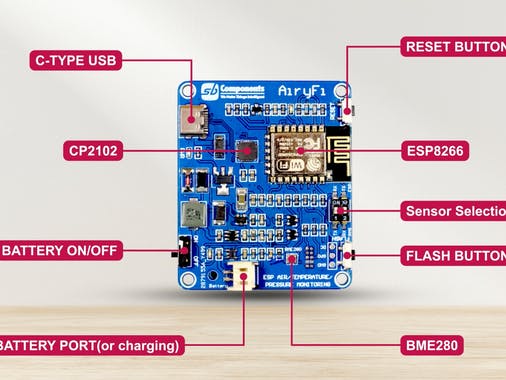Air is the substance we inhale. It's around 78 percent nitrogen, 21% oxygen, and 1% argon, plus various 'other' bits and pieces, many of which have been blasted out by people and their associated gear. Although carbon dioxide is an apparent pollutant that contributes to climate change, there are other factors to consider for human health, such as particulate matter. This is only very minute particles such as soot and smog. They're divided into two categories based on particle size: those less than 2.5 microns in diameter (PM2.5) and those between 10 and 2.5 microns in width (PM10). Respiratory sickness, heart disease, and lung cancer have all been related to this pollution.
Obviously, this is crucial information to have, but we have very little data on it in the United Kingdom. While most big cities have official sensors, the impacts may be quite localised near busy routes and confined in valleys. What effect does your neighborhood's makeup have on air quality? We set out to track our surroundings to discover how concerned we should be about the air quality in our neighbourhood.
Jyoti has released AiryFi, an ESP8266-based air quality monitoring station featuring an inbuilt PMSA003 laser dust sensor and a BME280 humidity sensor. AiryFi is an open-source portable Air Quality monitoring station that measures the quantity and mass of suspended particulate matter (PM1.0, PM2.5, and PM10) per unit volume in the air.
AiryFi allows you to collect detailed information on the mass and quantity of suspended particulates in the air, as well as a humidity sensor that measures relative humidity, barometric pressure, and ambient temperature. You can also share your data to the cloud using the onboard ESP8266, which comes pre-programmed with an AT command set firmware, allowing you to connect it to your Arduino device using C++ and you can see the output on the onboard 1.14" TFT display.
AiryFiBoard also has a battery connector for directly connecting a battery that acts as a UPS, as well as optional debug pins and a few onboard switches for power on/off, flash, and reset, among other features that make AiryFi a fantastic product.
The PMSA003 (Plantower PMSA003 PM2.5 Laser Dust Sensor) is a digital general-purpose particle concentration sensor that may be used to calculate the mass and amount of suspended particles in the air per unit volume and output in digital format. To provide quick and precise concentration data, the sensors can be placed in a range of concentrations of environment-related devices suspended particulate matter in the air.
The laser scattering concept is used in the PMSA003 sensor. Specifically, scattering of laser irradiation in air suspended particles while collecting scattered light at a certain angle in order to produce the scattering intensity versus time curve. The particle equivalent particle size and unit volume of particles of different particle sizes are calculated by a microprocessor utilising the MIE theory of the method.
PMSA003 Technical detailsThe relative humidity, barometric pressure, and ambient temperature are all measured by the BME280 humidity sensor.
The BME280 is a humidity sensor designed specifically for mobile and wearable applications where small size and low battery consumption are important design criteria. The device combines excellent linearity and high precision sensors, making it ideal for low current consumption, long-term stability, and EMC resilience. The humidity sensor has a very rapid reaction time, so it can meet performance criteria for new applications including context awareness and excellent accuracy across a wide temperature range.
BME280 Technical dataLow-power, highly integrated Wi-Fi solution from Espressif. The ESP8266 WiFi Module is a self-contained SOC with an inbuilt TCP/IP protocol stack that can provide access to your WiFi network to any microcontroller. The ESP8266 may run an application or offload all Wi-Fi networking activities to another CPU. Each ESP8266 module comes pre-programmed with AT command set firmware, so you can just plug it into your Arduino and have roughly as much WiFi functionality as a WiFi Shield (right out of the box)! The ESP8266 module is a low-cost board with a large, and rapidly increasing, community.
Technical Specifications1. Processor: L106 32-bit RISC microprocessor core based on the Tensilica Xtensa Diamond Standard 106Micro running at 80 MHz[5]
2. Memory:
- 32 KiB instruction RAM
- 32 KiB instruction cache RAM
- 80 KiB user-data RAM
- 16 KiB ETS system-data RAM
3. External QSPI flash: up to 16 MiB is supported (512 KiB to 4 MiB typically included)
4. IEEE 802.11 b/g/n Wi-Fi
- Integrated TR switch, balun, LNA, power amplifier and matching network
- WEP or WPA/WPA2 authentication, or open networks
5. 16 GPIO pins
6. SPI
7. I²C (software implementation)[6]
8. I²S interfaces with DMA (sharing pins with GPIO)
9. UART on dedicated pins, plus a transmit-only UART can be enabled on GPIO2
10. 10-bit ADC (successive approximation ADC)
AiryFi is currently available on Kickstarter at £45 for super early bird after it'll be £50, Jyoti already reached goal and its 682% funded ans still 21 days left for the Kickstarter campaign.
Visit -AiryFi Official Page












Comments
Please log in or sign up to comment.